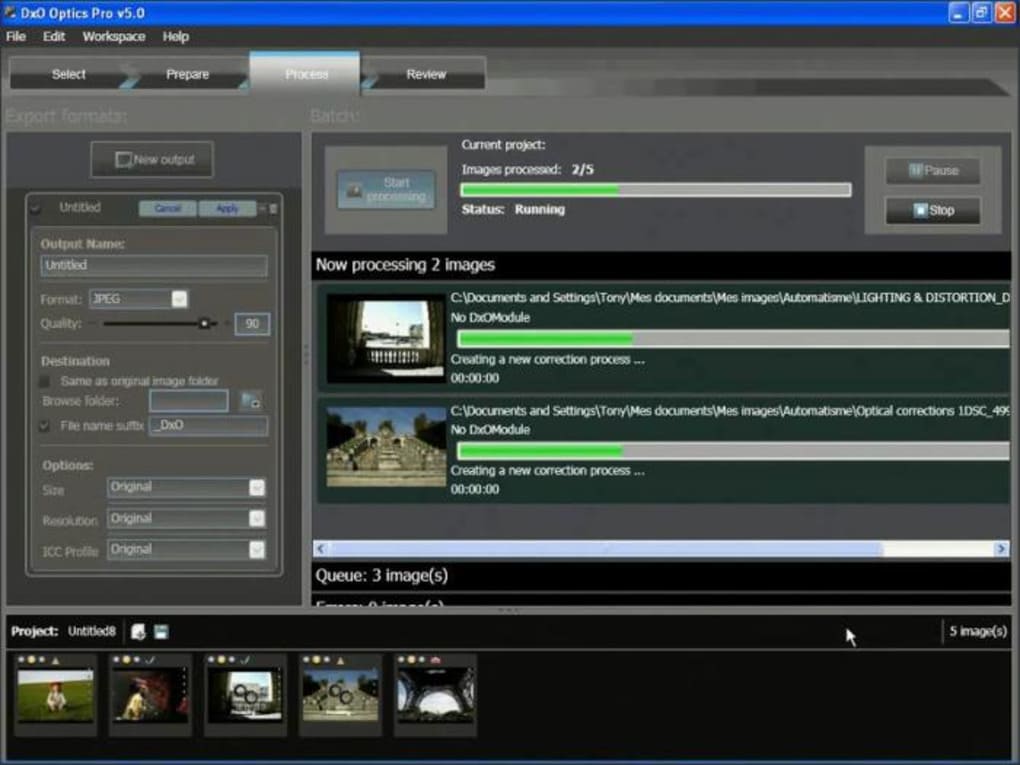

DxO has told us that they may, pending the response to these new calibrations, apply them to other previously supported cameras as well.
Dxo optics pro 8.5 skin#
DxO claims these improvements to color modeling can lead to better accuracy in skin tones and DxO FilmPack renderings. New camera calibration algorithms are used for newly supported cameras and the following older, but still popular bodies as well: Canon's EOS-5D, EOS-5D MkII and EOS-7D, along with the Nikon D90, D5000, D7000, D3 and D700. Should you view an image at a new magnification level or scroll to another portion of it, a new preview must still be generated. Note, however, that in addition to being stored on a per-session basis (which means it's lost when you quit the app), the cache is built only for pixels currently visible onscreen. This means that you can cycle among images for which the correction preview has been updated without waiting for a new (and duplicate) preview to be rebuilt. Optics Pro caches the image previews that it generates once you click on an image.
Dxo optics pro 8.5 mac#
Optics Pro 8 now displays program mode, exposure bias and metering mode in its EXIF data palette in both Mac and Windows versions. And you can now reset sliders to their default state by double-clicking the slider handle. You can also choose to preview noise correction results at magnifications below 75%. The obtrusive text overlays in previous versions indicating appropriate screen views for evaluating lens corrections have been more sensibly recast as alert icons within their specific tool palettes. You also have the ability to display individual RGB and luminance channel histograms in addition to the default composite view. The controls under the Light and Color palettes are placed in the order in which they're meant to be used for the most efficient results.Īs you can see above, the default palette arrangement helpfully places the histogram along the right side of the Customize window atop the editing tools. The histogram now sits above the editing tools by default. The color scheme, palette arragement and individual tool locations of version 7 (above). The most common adjustments are now not only in close proximity, but helpfully arranged by order in which they are meant to be used. With the aim of leading users of both Mac and Windows platforms to a more efficient workflow, color and tonal adjustment tools are more logically grouped into two 'Light and Color' palettes: one basic and one advanced. Palettes have been reorganized and some tool locations have changed as well in both Mac and Windows versions. Windows users will notice a slightly different color scheme and UI design between Optics Pro 7 (above).

Worthy of note, if you're a Mac user, is that Optics Pro 8 supports the Retina display resolution found on the latest Apple MacBooks. Windows users will notice minor changes to the UI in version 8 that make it more closely resemble the Mac version and that DxO hopes will contribute to a more logical and discoverable interface.


 0 kommentar(er)
0 kommentar(er)
